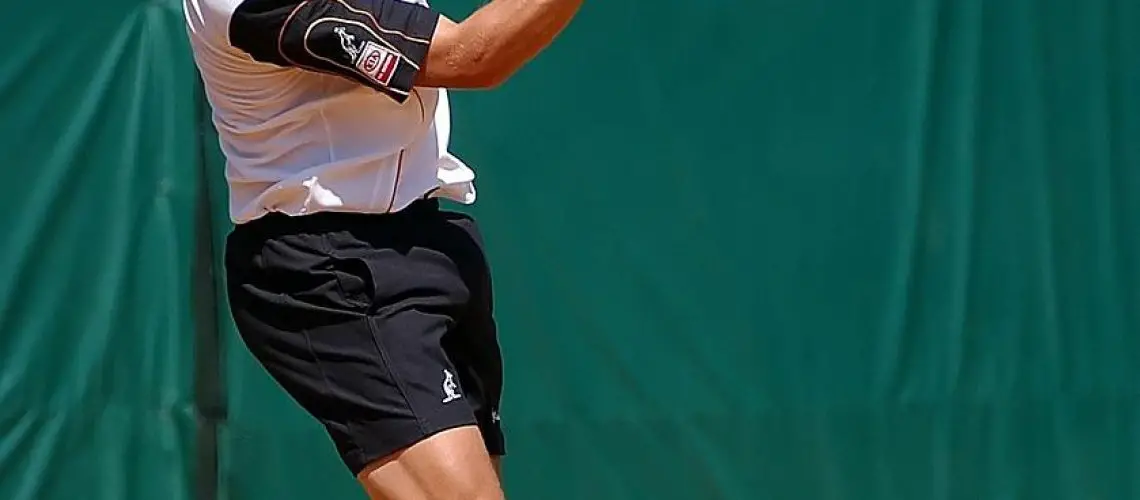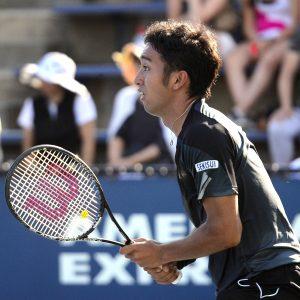We may earn money or products from the companies mentioned in this post.
Brief overview of tennis in Spanish-speaking countries

Tennis has gained significant popularity in Spanish-speaking countries, becoming a beloved sport among locals The roots of tennis in these regions can be traced back to the early 20th century when it was introduced by European immigrants and gained traction over time
1 Popularity and history of the sport in these regions
Spanish-speaking countries have embraced tennis with great enthusiasm, contributing to its growth and development Tennis clubs and tournaments have flourished, providing opportunities for both professional players and amateurs to showcase their skills
The sport’s popularity can be attributed to its accessibility and inclusivity, as people from all walks of life can participate From recreational players enjoying friendly matches at local parks to top-ranked professionals competing on the international stage, tennis has become an integral part of the sporting culture in Spanish-speaking countries
2 Famous Spanish-speaking tennis players
Spanish-speaking countries have produced several exceptional tennis players who have left an indelible mark on the sport These athletes have achieved remarkable success and garnered worldwide recognition for their talent, dedication, and hard work
Rafael Nadal, hailing from Spain, is undoubtedly one of the most celebrated names in tennis history With his powerful forehand shots, relentless determination, and unrivaled agility on clay courts, Nadal has claimed numerous Grand Slam titles throughout his career
Argentina has also contributed immensely to the world of tennis with iconic players like Guillermo Vilas and Gabriela Sabatini Vilas dominated men’s singles during the 1970s with his versatile playing style, while Sabatini became a household name after winning the US Open in 1990
In addition to these luminaries, other notable Spanish-speaking tennis players include Juan Martín del Potro (Argentina), David Ferrer (Spain), and Garbiñe Muguruza (Spain). Their remarkable achievements have inspired countless aspiring tennis players in their respective countries
Importance of knowing how to say “tennis” in Spanish when traveling or engaging with locals

When traveling to a Spanish-speaking country or interacting with locals, it is essential to have a basic understanding of the local language Knowing how to say “tennis” in Spanish can enhance your communication skills and facilitate meaningful interactions
By learning the Spanish word for tennis, “tenis,” you can express your interest in the sport and potentially find opportunities to engage in friendly matches or join local tennis communities This linguistic knowledge can also help you navigate conversations about sports, whether it’s discussing recent tournaments or sharing your passion for the game
Moreover, using the correct terminology shows respect for the local culture and demonstrates your willingness to immerse yourself in their customs It fosters a sense of connection and opens doors for authentic cultural experiences during your travels
So, next time you find yourself in a Spanish-speaking country or conversing with someone from these regions, remember that understanding how to say “tennis” in Spanish can go a long way in building connections and creating memorable experiences
How to say “tennis” in Spanish

When it comes to talking about tennis in Spanish, the general term you need is “el tenis” This straightforward translation captures the essence of the sport and makes it easy for Spanish speakers to understand what you’re referring to
Pronunciation tips and phonetics for non-native speakers
For non-native speakers, correctly pronouncing words in a new language can be challenging When saying “tenis” in Spanish, remember to emphasize the second syllable, with stress falling on the ‘e’ sound The word should be pronounced as “teh-nees”
Another important aspect is intonation In Spanish, words are typically pronounced with a melodic rhythm, emphasizing certain syllables more than others So when saying “tenis,” make sure to give prominence to the stressed syllable while maintaining a smooth flow throughout
To avoid common pronunciation mistakes, pay attention to not overemphasizing the final ‘s’ sound In Spanish, this letter is often softer and less audible compared to English pronunciation
Regional variations and colloquialisms within the Spanish language
The beauty of language lies in its diversity, and Spanish is no exception Depending on the region or country you find yourself in, there might be slight variations in how people refer to tennis
In Latin American countries like Mexico or Argentina, you’ll still commonly hear “el tenis” However, it’s worth noting that some countries may have their own localized terms or expressions related to tennis that are more colloquial in nature
In Spain, for example, you might come across regional variations such as “la raqueta” (the racket) or simply “padel,” which refers specifically to paddle tennis These variations add a touch of cultural richness and uniqueness to the language
So, whether you’re playing tennis in Madrid or Buenos Aires, remember that “el tenis” will be universally understood However, embracing these regional variations can also deepen your understanding and appreciation of Spanish-speaking cultures around the world
Tennis vocabulary and phrases in Spanish

Whether you’re a tennis enthusiast or simply looking to expand your language skills, learning tennis vocabulary and phrases in Spanish can be both fun and useful Let’s dive into some essential words and phrases related to playing tennis
Essential words related to playing tennis
To fully navigate the world of tennis, it’s important to know the basic terms used on the court Here are a few key words:
- Court – “la cancha”
- Racket – “la raqueta”
- Ball – “la pelota”
- Net – “la red”
In addition, if you’re interested in singles or doubles matches, it’s helpful to know the following terminology:
- Singles – “individuales”
- Doubles – “dobles”
Tennis scoring terms
The scoring system in tennis can sometimes be confusing, especially if you’re new to the sport Here are some commonly used scoring terms:
- Love – “cero” (used when a player has no points)
- Point – “punto” (each individual score during a game)
- Game – “juego” (a complete set of points that determines who wins)
Set- “set” (a collection of games that determines who wins the overall set)
Match- “partido” (the final outcome between two players or teams competing against each other)
Advantage- “ventaja” (when a player is one point away from winning the game after deuce)
Deuce- ”iguales” (when the score is tied at 40-40, and one more point is needed to win the game)
Useful phrases while playing or watching a match
Whether you’re on the court or cheering from the sidelines, here are a couple of handy phrases to express your enthusiasm:
- “¡Buen golpe!” – Good shot!
- “¡Vamos!” – Come on! / Let’s go!
Engaging with the tennis community in Spanish-speaking countries

If you find yourself in a Spanish-speaking country and want to engage with the local tennis community, there are several ways to do so
Watching live matches at local clubs or international tournaments
Attending live matches can be an exciting way to immerse yourself in the world of tennis Here are some tips for interacting with locals during these events:
- Strike up conversations with fellow spectators about their favorite players or discuss memorable moments from past matches
- Show respect for players by observing proper etiquette during matches, such as refraining from making excessive noise during crucial points
Participating in tennis lessons or clinics
Taking part in tennis lessons or clinics is an excellent opportunity to improve your skills while connecting with other players Here’s how you can make the most of this experience:
- Research reputable coaches and facilities that offer lessons catered to your skill level and goals
- Communicate with instructors in Spanish to ensure they understand your expectations and can provide the guidance you need
Joining local tennis clubs or social groups
Becoming a member of a local tennis club or joining social groups centered around the sport can be highly beneficial Consider these tips for making connections within the community:
- Attend club events and participate in friendly matches to meet fellow tennis enthusiasts
- By immersing yourself in the sport and engaging with others, you’ll have the opportunity to improve your Spanish language skills while enjoying your love for tennis
Useful Links

How to say “tennis” in Spanish?
How to pronounce tennis in Spanish | HowToPronounce.com
Do You Know How to Say Tennis in Spanish?
Spanish Translation of “tennis” | Collins English- …
How to say tennis ball in Spanish? – Translations
How to say “Tennis is my favorite sport” in Spanish?
Tennis Vocabulary in Spanish and French
How do you say “I play tennis” in Spanish (Mexico)?
Spanish Word for tennis
How to say Tennis in Spanish – Vidéo Dailymotion
set of tennis – Translation into Spanish – examples English
“tennis shoes” in Spanish | Spanish-English Dictionary
How To Say Tennis Racket in Spanish
what are some basic tennis terms in spanish?
Tennis Terms in Spanish Flashcards
You like to play tennis in Spanish?
Tennis Vocabulary in Spanish and French
Padel Tennis Vocabulary – Key Spanish Words, Terms, …
“Tennis is my favorite sport.” – Duolingo
Necesito El Ritmo: The Importance Of Rhythm In …






